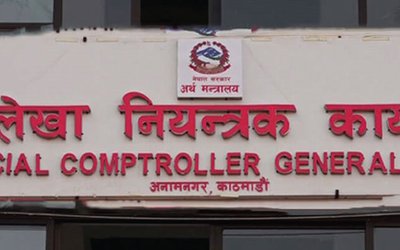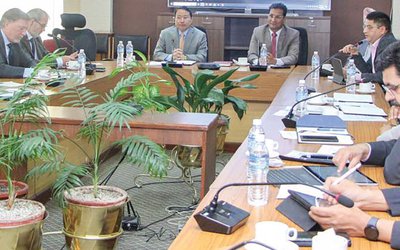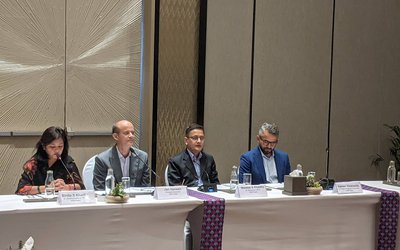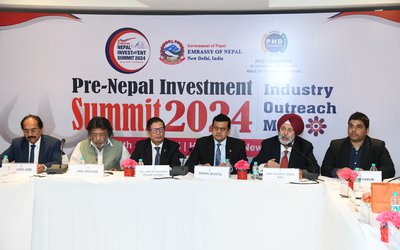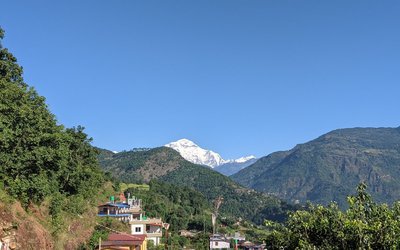As Nepal’s policymakers are showing growing concerns over declining workers in the Gulf and lack of job for workforce, the recently released International Labor Organization’s 'The World Employment and Social Outlook 2017' has no good projection either.
With three governments in a matter of a year, Nepal’s political instability seems to have no sign of immediate solution and uncertainty will continue to create proper atmosphere for social and political upheaval.
“Asia and the Pacific accounts for around 63.5 per cent of the world’s working poor (those living on less than US$3.10 per day), compared with nearly 80 per cent at the turn of the century. In fact, the rate in 2016, at 27.8 per cent, represents a decrease of over 37 percentage points since 2000,” reveals the report.
According to the report, despite progress, certain areas are still characterized by exceptionally high incidences of working poverty, particularly in Southern Asia.
“This is not to say there has been no progress; vulnerable employment as a share of total employment in the region as a whole decreased from nearly 60 per cent in 2000 to 50.1 per cent in 2016. However, within the region, vulnerable employment is still stubbornly high. For example, Southern Asia had an estimated rate of 74.8 per cent in 2016, compared to Global GDP growth that hit a six-year low in 2016, at 3.1 per cent, well below the rate projected in the previous year,” says the report.
Global unemployment is expected to rise by 3.4 million in 2017, Global unemployment levels and rates are expected to remain high in the short term, as the global labor force continues to grow.
In particular, the global unemployment rate is expected to rise modestly in 2017, to 5.8 per cent (from 5.7 per cent in 2016) – representing 3.4 million more unemployed people globally (bringing total unemployment to just over 201 million in 2017).
And while the global unemployment rate is expected to hold relatively steady in 2018, the pace of labor force growth (i.e. those in search of employment) will outstrip job creation, resulting in an additional 2.7 million unemployed people globally.
The increase in unemployment levels and rates in 2017 will be driven by deteriorating labor market conditions in emerging countries (as the impacts of several deep recessions in 2016 continue to affect labor markets in 2017). In fact, the number of unemployed people in emerging countries is expected to increase by approximately 3.6 million between 2016 and 2017 (during which time the unemployment rate in emerging countries is expected to climb to 5.7 per cent, compared with 5.6 per cent in 2016).
In contrast, unemployment is expected to fall in 2017 in developed countries (by 670,000), bringing the rate down to 6.2 per cent (from 6.3 per cent in 2016).
Unemployment levels in developing countries are also expected to increase in 2017 (by 450,000), with unemployment rates hovering at around 5.5 per cent in 2017 and 2018. For many developing and emerging countries, however, chronic poor-quality employment – as represented by high shares of own-account workers and contributing family workers (collectively classified as workers in vulnerable forms of employment) and working poverty – takes centre stage.
Vulnerable employment – at 1.4 billion worldwide – remains pervasive. Workers in vulnerable forms of employment are typically subject to high levels of precariousness, e.g. they often have limited access to contributory social protection.
As a result, the number of workers in vulnerable forms of employment is projected to grow globally by 11 million per year. The two regions most affected by vulnerable employment are Southern Asia and sub-Saharan Africa.
Reductions in working poverty are slowing, endangering the prospects for eradicating poverty as set out in the Sustainable Development Goals. Working poverty remained a problem in 2016, with nearly half of workers in Southern Asia.
Of notable concern are gender disparities in labor market opportunities, which cut across and persist in a number of areas. For example, in Southern Asia, close to 82 percent of women were in vulnerable employment in 2016, compared with just over 72 per cent of men.
Although ILO’s report has projected some positive sign for the developed countries of the world in the next fiscal year, unemployment continues to increase in parts of the world, including in countries like Nepal.

Keshab Poudel
Poudel is the editor of New Spotlight Magazine.
- ECONOMY: Growth At 3.3
- Apr 16, 2024
- DPM’s SHRESTHA’S CHINA VISIT High Profile, Low Key
- Apr 14, 2024
- Maha Kumbha In Barahkshetra: A Sacred Festival In Sacred Koshi (Kaushiki) River
- Apr 09, 2024
- LOSS AND DAMAGE: Upper Tamakoshi A Case
- Apr 02, 2024
- Helvetas-Nepal’s InElam Promoting Herbal Oil In Sarlahi
- Mar 31, 2024



